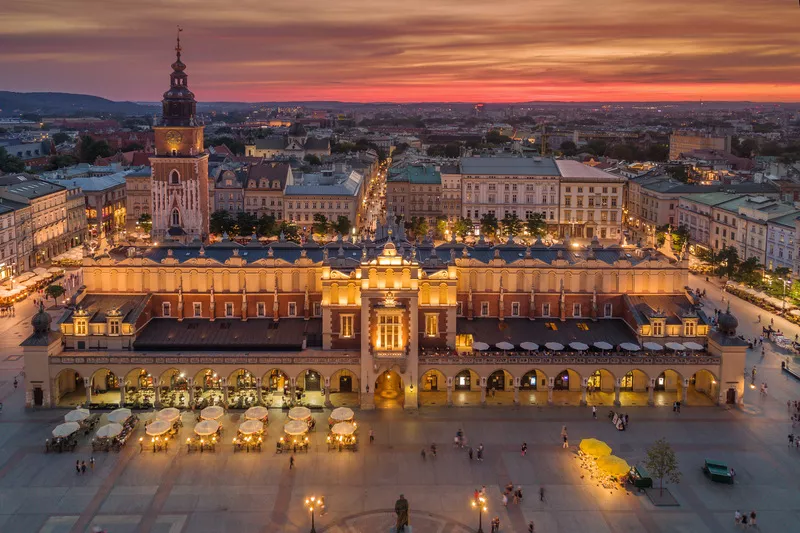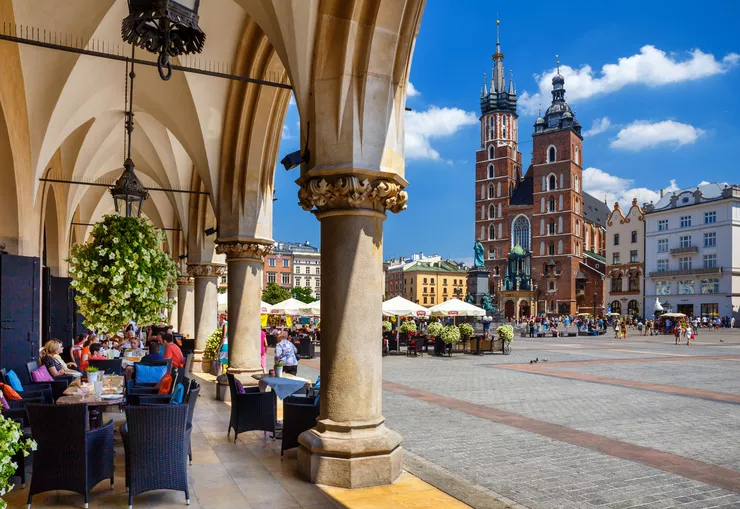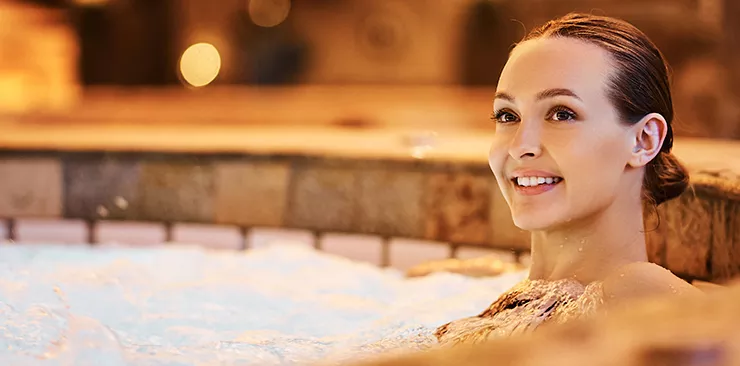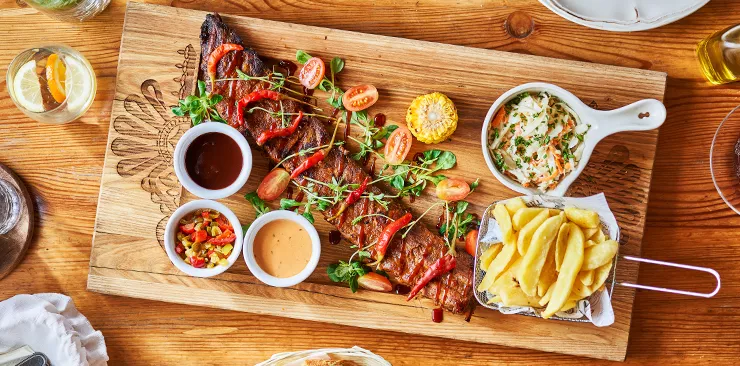





The Cloth Hall. Kraków’s oldest shopping arcade.
One of the buildings that visitors arriving in Kraków immediately recognise from countless photos is the Cloth Hall – Sukiennice, taking the centre of the city’s Main Market Square. Not all of them, however, realise that the building is the city’s oldest shopping arcade, and that it stands in the middle of a square where the inhabitants of the rapidly growing royal capital city could buy all the commodities they needed.

Kraków’s gigantic Main Market Square used to be densely packed with developments serving commerce: there were the Rich Stalls and the Poor Stalls, the Great Scales and the Small Scales, Sheep Shearers, and many more, including the buttery. Of all these, only Sukiennice, that is the Cloth Hall, has survived.
Since at least the Great Charter of the City in 1257, the centre of the square was taken by a “street” formed by the stalls selling cloth – sukno – hence the name. Locked up for the night, the street was roofed five decades later, and remodelled in the 14th century, during the reign of King Casimir the Great, into a 108-metre-long single-storey hall, where expensive fabrics, mostly Flemish and (yes!) English, were stored and traded. After a fire that ravaged it in the mid-16th century, the building received a Renaissance guise, and notably its tall parapet wall with gargoyles. The gateways in the centres of the long sides were added in the first years of the 17th century, while the charming colonnades had not been added until the 19th century.
Today, the lower storey of the Cloth Hall attracts souvenir hunters. They rummage through the historic stalls in search of amber and silverware, wooden figurines and dolls, chess sets (including the three-sided one invented by a Kraków genius for three players), Easter eggs, glass baubles for the Christmas tree, leather slippers, sheepskins, wool blankets, lace doilies and tablecloths meeting their taste. The upper storey houses the Gallery of 19th-Century Polish Art, presenting mostly paintings, ranging from the huge canvases of historicism and academism to the diminutive charming images by impressionists and naturalists. One of the terraces, entered through the same door and staircase as the museum, offers a line of café tables overlooking the Main Market Square opposite St Mary’s Church. Not far away from it, another door opens into the Underground Market Square: an archaeological reserve, whose multimedia installations help to visualise life in the days when the Cloth Hall was very young. For more information, click here.
A legend makes the iron knife hanging in the passage under the Cloth Hall an important part of the legend of two brothers who built St Mary’s with its different towers. Asking your guide or a chance Cracovian to tell you the legend, surprise them with the true reason why the knife is there. The city was chartered on the Law of Magdeburg, and the knife was there to remind that it punishes minor theft with the loss of an ear and major ones – of a hand.
The Gallery of 19th-Century Polish Art is located in the halls that were the first home of the National Museum. A fact that is made more interesting by a particular circumstance: in 1879, when it opened, Poland did not exist, as its territory had been invaded and was occupied by three neighbouring powers. Thus, it was not only the first Polish museum but also the only national museum of a nation that had no state.








